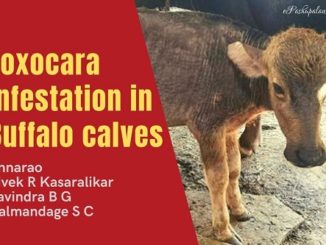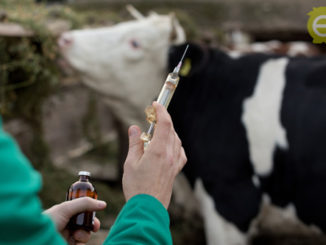Introduction
India being an agrarian country millions of lives are dependent on agriculture and its related activities and thus contributes much to the growth of the country. The management, production of agricultural products is of utmost important keeping in consideration the grassroot level- the storage, maintenance of temperature, moisture, mechanical injury and protection from pest to ensure that the agricultural produce are delivered to the supplier free from damage and disease infected crops. It is at this stage the importance of protection from various disease organisms comes into play. There are innumerable disease causing organisms and the most important nuisance is caused by mycotoxins and the resulting mycotoxicosis cannot be ruled out. Mycotoxins cause economic losses at all levels of food and feed production, including crop and animal production, processing and distribution. According to the FAO (Food and Agriculture Organization) around 50% of the world’s crop harvests may be contaminated with mycotoxins.
Mycotoxins
Not moulds but their toxins are problematical for animals as well as for humans. They accumulate in grains and cause enormous economic losses. Therefore, it is crucial to identify and deactivate these mycotoxins in time.” Professor Dr. Rudolf Krska
Mycotoxin is derived from Greek word mykes– mushroom, toxin– poison. Mycotoxins are naturally occurring toxins produced by certain moulds (fungi). They are secondary metabolites of moulds that have effect on humans, animals and crops. They are non-antigenic, low molecular weight compounds and many of them are heat stable. The adverse health effects of mycotoxins range from acute poisoning to long-term effects such as immune deficiency and cancer. While all mycotoxins are of fungal origin, not all toxic compounds produced by fungi are called mycotoxins. The toxigenic fungi involved in the human and animal food chains belong mainly to five genera: Aspergillus, Fusarium, Claviceps, Stachybotrys and Penicillium.
The acute or chronic intoxication following ingestion of contaminated plant material is termed mycotoxicosis. In developing countries mycotoxicosis are common where the methods of harvesting and storage are not properly regulated and there is no proper check on the sale and distribution of suspect crops for human and animal consumption.
Currently there are around 400 mycotoxins reported. These compounds occur under natural conditions in feed as well as in food. Some of the most common mycotoxins include: aflatoxins, ochratoxin, citrinin, fumonisins, ergot alkaloids, patulin, trichothecenes, zearalenone etc. Mycotoxins are produced by different strains of fungi and each strain can produce more than one mycotoxin.
Predisposing factors involve in mycotoxin production
Biological factors: Stress and reduced vigor under field conditions predispose plants to infestation and colonization by toxigenic fungi. Some fungal strains are capable of producing more than one mycotoxin and also a single mycotoxin is produced by more than one fungus. Mycotoxin contamination of foods and feed materials frequently occurs in the field following infection of plants with particular pathogenic fungi or with symbiotic endophytes.
Environmental factors: One of the key determinants of fungal colonization and mycotoxin production are the moisture content and ambient temperature. Avoiding mycotoxin accumulation in stored grains and oilseeds depends primarily on moisture control. The metabolic activity of insects and mites causes an increase in both moisture content and temperature of the infested grain, which is favourable for fungal development. The mould spores carried by them and their faecal material are an additional substrate for mould growth. Also through the physical damage of grain further predisposes mould invasion of the exposed endosperm.
Storage: In stored grain, toxigenic fungal contamination, and mycotoxin production result from a complex interaction between moisture, temperature, substrate aeration, oxygen (O2) and carbon dioxide (CO2) concentration, inoculum concentrations, microbial interactions, mechanical damage, fungal abundance and insect infestation.
Distribution and Processing: Contamination may also occur during processing and storage of harvested products and feed whenever environmental conditions are appropriate for spoilage fungi. Mycotoxin can enter the human food chain directly by cereals, nuts, seeds, dried fruit, coffee, cocoa, spices, fruits (particularly apples), dried peas, beans, beverages, other plant materials, indirectly and directly by food products obtained from animals given contaminated feeds through residues in milk, meat, eggs and their derivatives.
Types of mycotoxins
Aflatoxins: Aflatoxins (AF) produce disease in a wide range of mammals, birds, aquatic animals. Fungi such as Aspergillus flavus, A. parasiticus, A.nominus are associated with the production of aflatoxicosis. The four major aflatoxins are called B1, B2, G1 and G2 based on their fluorescence under UV light (blue or green) and relative chromatographic mobility during thin-layer chromatography. Among these B1 is the most potent natural carcinogen known is usually the major aflatoxin produced by toxigenic strains. The liver is the principal organ affected by aflatoxins resulting in hepatocellular necrosis and impaired liver functions. Aflatoxin B1 can escape rumen degradation and gets converted to another form of aflatoxin M1 which is excreted in the milk. The common crops –maize, wheat, oats, barley, rice, peanuts and other nuts are contaminated by the aflatoxins.
Ochratoxin: Ochratoxins are produced by toxigenic strains of Aspergillus species – A. westerdjikiae and A. ochraceus and Penicillium species –Penicillium verrucosum, a common contaminant of barley. Ochratoxin A is the most common and the most toxic member as compared to B, C, and D. Known to be potentially nephrotoxic and heat stable it produces immunosuppressive and carcinogenic effects and cause general reduction in productivity. In addition to being a nephrotoxin, ochratoxin A is a liver toxin, a potent teratogen. Ochratoxin A has been found in barley, oats, rye, wheat, coffee beans, and other plant products. With a high chance of barley being contaminated with ochratoxin it may be present in certain wines, especially those from grapes contaminated with Aspergillus carbonarius.
Citrinin: Initially isolated from P. citrinum now they are found in various other fungal species P. viridicatum, P. expansum and other Aspergillus species. Citrinin has been associated with yellow rice disease in Japan. It has also been implicated as a contributor to porcine nephropathy. Citrinin produces severe kidney damage, hepatic damage and immunosuppression. Wheat, oats, rye, corn, barley, and rice have all been reported to contain citrinin.
Fumonisin: Fumonisin are produced by a number of Fusarium species notably Fusarium verticillioides and F. proliferatum. Fumonisins affect animals in different ways by interfering with sphingolipid metabolism. Horses and pigs as compared to cattle, sheep and poultry are more susceptible. They cause leukoencephalomalacia (hole in the head syndrome) in equines and rabbits; pulmonary edema and hydrothorax in swine; and hepatotoxic and carcinogenic effects and apoptosis in the liver of rats. In humans, there is a probable link with esophageal cancer.
Ergot alkaloids: These compounds are produced as a toxic cocktail of alkaloids in the sclerotia of species of Claviceps purpurea which are common pathogens of various grass species. The ingestion of these sclerotia or ergots, has been associated with diseases since antiquity. The principal animals at risk are cattle, sheep, pigs, and chickens. Clinical symptoms of ergotism in animals include gangrene, abortion, convulsions, suppression of lactation, hypersensitivity and ataxia.
Patulin: It was first isolated from Penicillium patulum (now Penicillium griseofulvum). Patulin is regularly found in unfermented apple juice, although it does not survive the fermentation into cider products. Penicillium expansum, the blue mold that causes soft rot of apples, pears, cherries, and other fruits, is recognized as one of the most common offenders in patulin contamination.
Trichothecenes: The trichothecenes are extremely potent inhibitors of eukaryotic protein synthesis; different trichothecenes interfere with initiation, elongation, and termination stages. Trichodermin was the first trichothecene shown to inhibit peptidyl transferase activity. Diacetoxyscirpenol, deoxynivalenol, and T-2 are the best studied of the trichothecenes produced by Fusarium species. Deoxynivalenol is one of the most common mycotoxins found in grains. When ingested in high doses by agricultural animals, it causes nausea, vomiting, and diarrhea; at lower doses, pigs and other farm animals exhibit weight loss and food refusal.
Zearalenone: Zearalenone, a secondary metabolite derived from Fusarium graminearum. Although biologically potent it is rarely toxic. The reduced form of zearalenone, zearalenol, has increased estrogenic activity. An association between moldy grain consumption and hyperestrogenism in swine has been observed since the 1920s; modern work shows that dietary concentrations of zearalenone as low as 1.0 ppm may lead to hyperestrogenic syndromes in pigs; higher concentrations can lead to disrupted conception, abortion, and other problems. Reproductive problems have also been observed in cattle and sheep.
Effect on the animal health and production
The various mycotoxins described above can have serious health implication in animals depending upon the species, age, sex, climatic influences, duration of exposures to mycotoxin, organs or tissues affected. Young growing animals are more susceptible to certain mycotoxins than are adults. Acute disease episodes can be seen when animals consume critical quantities of them. Specific toxins affect specific organs or tissues such as the liver, kidney, oral and gastric mucosa, brain, or reproductive tract. In acute mycotoxicoses, the signs of disease often are marked and directly referable to the affected target organs. At lower concentrations, the effects of mycotoxins are more protean. They reduce the growth rate of young animals, and some interfere with native mechanisms of resistance and impair immunologic responsiveness, making the animals more susceptible to infection. These effects on immunity and resistance are difficult to recognize because the signs of disease are associated with the infection rather than with the mycotoxin that predisposed the animal to infection.
In poultry aflatoxins can cause reduction in body weights and cause increased in the liver and kidney weights. It can also cause blood urea and decreased serum levels of total protein, albumin, triglycerides and phosphorus. Enzymes such as alkaline phosphatase, acid phosphatase, lactate dehydrogenase, succinate dehydrogenase that are found in heart, liver, spleen and pancrease in (1 week old) chick are altered due to the feed contaminated with Fusarium roseum.
Swines are the most sensitive species to mycotoxins. Aflatoxin has been found to cause immunosuppressive effects which occur at the cellular levels than at the humoral level. Inhibition of DNA synthesis in porcine lymphocytes has also been found. The estrogenic effects of zearalenone are found to be pronounced and prolong in pigs. The effects on gilts and sows include edematous uterus, ovarian cysts, increased follicular maturation and number of stillborns and decreased fertilization rate. In equines the toxins produced by Fusarium moniliforme have been found to cause equine leukoencephalomalacia and acute neurotoxicity. The effect of mycotoxins in cats and dogs are quite severe and in extreme conditions lead to death. Ingestion of feed infected with moulds leads to hepatitis in dogs.
Aflatoxins (AF) have been shown to negatively affect production, immune system function, and rumen metabolism in cattle. Increasing AF in cattle feed to has been shown to significantly reduce feed intake at each level in a dose-dependent manner. Decreased feed efficiency in cattle has been attributed to compromised ruminal function by reducing cellulose digestion, volatile fatty acid (i.e. acetate, propionate, and butyrate) production and rumen motility. Ochratoxins, on the other hand, do not cause significant toxicity to cattle when fed alone in naturally occurring doses. Aflatoxins also affect the quality of milk produced by dairy cows and result in carry-over of AFM1 from AF-contaminated feed. The T-2 toxin is also believed to induce immunosuppression in cattle by decreasing serum concentrations of IgM, IgG, and IgA, neutrophil functions and lymphocyte blastogenesis, and the response of lymphocytes to phytohemagglutinin. This toxin was also shown to induce necrosis of lymphoid tissues. Bovine infertility and abortion in the final trimester of gestation also have resulted from consumption of feed contaminated with T-2 toxin. Calves consuming T-2 toxin at 10–50 mg/kg of feed have demonstrated ulcers in the abomesum and sloughing of the papilla in the rumen. Fescue foot, hyperthermia, and fat necrosis in cattle have been linked to consumption of tall fescue parasitized with Acremonium coenophialum. Fescue foot in cattle has been shown to derive from vasoconstriction and gangrene in the hooves and tail due to the relaxation of smooth muscles caused by ergot alkaloids. Hyperthermia (summer fescue toxicosis) in cattle has been characterized by symptoms of weight loss, salivation, and heat stress.
Biological control
Biological control strategies have been employed with some success in using fungi, bacteria and yeasts. Phenolic compounds derived from Spirulina strains exerted efficient antifungal activity against F. graminearum. Essential oils extracted from plants usually contain some antimicrobial or antioxidant compounds, and they are regarded as good choices of natural fungicides. Qualities expected in a biological control agent include: genetic stability, efficacy at low concentrations and against a wide range of pathogens, simple nutritional requirements, survival in adverse environmental conditions, growth on cheap substrates in fermenters, lack of pathogenicity for the host plant, no production of metabolites potentially toxic to humans, resistance to the most frequently used pesticides and compatibility with other chemical and physical treatments.
Bacillus, Pseudomonas and Bulkholderia strains completely inhibit A. flavus growth. Fullfaeces-sourced Stenotrophomonas maltophilia, and a few other microbes were also able to confer remediation strategies against aflatoxicosis. Maize seed treatment with Bacillus amyloliquefaciens and Enterobacter hormaechei may improve the quality of maize grains obtained at harvest by reducing their toxin content. Rhizobacteria, particularly those belonging to the Pseudomonas and Bacillus species were reported to produce significant reduction in Fusarium verticilloides and fumonisin B production. Yeast isolates, Issatchenkia arientalis, Metschnikowia pulcherrima, Issatchenkiaterricola and Candida incommninis have been observed to reduce the A. carbonarium and A. niger colonization on grape berry.
Besides these other methods that can be employed include lowering of moisture content of plant seeds after post harvesting and during storage, storing of commodities at low temperature whenever possible. Chemical treatment – acetic acid, ammonia gas, calcium hydroxide, formaldehyde, hydrogen peroxide, methylamine, ozone gas can be used for the removal of mycotoxins from contaminated commodities. Ozone treatment at 2% is known to rapidly degrade AF B1, G1; and ozone at 20% rapidly degrades B2, G2.
Conclusion
At all stages (crops transportation, storage of crop, processed feed) the contamination of the feeds by mycotoxins need to be checked. The humidity, temperature, moisture are the predisposing factors that plays an important role in the formation of moulds and the resulting toxins. The combination of Good Agricultural Practices (GAP), physical, chemical and biological control, and strong emphasis on awareness need to be adopted. Simple cultural practices like good storage practices, proper ventilation, washing and picking out/separating of contaminated seeds will contribute effectively in the prevention of toxins. Much of the mycotoxin challenge can be solved through awareness and cultural practices. Biological control agents should be made affordable to farmers and compounded in a manner that makes products easy and safe to handle. The efficacy of microbe-based control agents may be enhanced by selection of more efficient strains, gene manipulations, combination of a number of strains of microorganism and combination of synergistically acting other bio-products.
|
The content of the articles are accurate and true to the best of the author’s knowledge. It is not meant to substitute for diagnosis, prognosis, treatment, prescription, or formal and individualized advice from a veterinary medical professional. Animals exhibiting signs and symptoms of distress should be seen by a veterinarian immediately. |






3 Trackbacks / Pingbacks